Phonics Teaching Resources
Make teaching phonics easy with printable phonics worksheets, activities, games and more designed for primary teachers.
This collection of Australian curriculum-aligned teaching resources has been carefully reviewed by our expert teaching team to make sure every resource is classroom-ready — so we can make your lesson planning easier!
New to teaching phonics, or just looking for new ways to engage your students? Read on for a primer from our teacher team!
What Is Phonics?
You've likely heard the word 'phonics' thousands of times throughout your own education and maybe on one of those old as from the '90s. But what is phonics, exactly?
Phonics is technically defined as the systematic instruction of the relationships between letters and sounds in written language. But that's a mouthful, isn't it? More simply, phonics is the word we use to refer to the method of teaching reading by focusing on the relationship between written letters and the sounds they represent.
In phonics, kids learn how to decode written words by recognising the sound-symbol correspondence.
Phonics vs. Phonemic Awareness
When we start talking about letters and their sounds, we start to wander into phonemic awareness territory. So what's the difference?
The words phonics and phonemic are similar, and the two concepts are — surprise, surprise — related. But there are key differences.
Phonemic awareness is essentially the ability to identify and manipulate individual sounds — aka phonemes — in spoken language. It's those individual sounds and their correspondence to the letter symbols that can be used by kids to then decode written words.
So students learn to recognise the individual sounds of spoken language (phonemes) and how these sounds can be represented by letters (graphemes) in written language. Then they apply this knowledge to decode written words by understanding the sound-symbol correspondence.
Consider this example:
- Let's say your student can identify the separate sounds in a spoken word such as 'cat' (i.e., /k/ /a/ /t/). That's phonemic awareness.
- Now let's say you're teaching that same student that the letter 'c' represents the /k/ sound and that the letter 'a' represents the /a/ sound, and that these sounds combine to form the word 'cat.' That's phonics!
How to Teach Phonics in Primary School
OK, you probably already know that phonics is all about teaching word recognition via grapheme-phoneme associations and letter-sound correspondences.
It’s a means of teaching early readers the pieces that make up a word so they can blend them together to decode the English language as readers and writers.
But how do you teach it?
In the earliest stages, phonics instruction typically begins with teaching students the most common letter-sound relationships. You start with consonants, then move on to vowels, then consonant blends.
Students then learn to sound out words by decoding the letters and blending the sounds together to form words.

Phonics Vocabulary Terms to Remember
The English language system is one of the hardest to teach and learn, so how do you teach phonics? Let’s start with the phonics vocabulary.
- For starters, there are 26 letters that create approximately 44 phonemes, the word for the individual speech sounds that make up words. Put together, phonemes make words. OK, easy enough, right?
- Well, these phonemes can be written in more than 200 different letter combinations, known as graphemes. Graphemes can be made up of 1 letter (such as 'p' in 'pig'), 2 letters (such as 'gh' in ghost), 3 letters (such as 'igh' in night), or 4 letters (such as 'ough' in rough).
- Then there are digraphs or two letters that work together to make one sound — such as “ph” in graph. But wait, isn’t that a grapheme? Yup, a digraph is a type of grapheme.
- So is a trigraph, trigraphs, aka three letters that work together to make one sound, such as 'dge' in edge.
- And if you’re teaching phonics, you can’t forget dipthongs, the name for a sound that is formed by the combination of two vowels in a single syllable, such as 'ou' in loud.
Most students will spend foundation, year 1 and even year 2 getting a handle on all phonics elements!
- Plus Plan
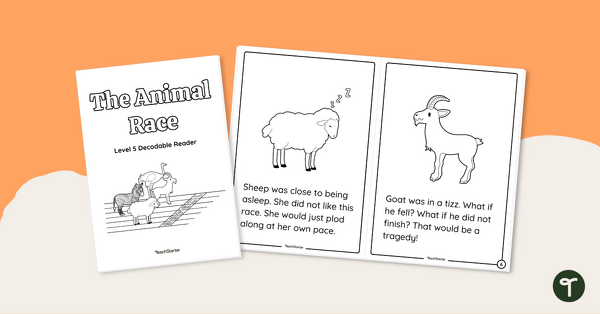
The Animal Race - Decodable Reader (Level 5)
Develop confident, successful readers with this phonics-based, printable decodable book.
- Plus Plan
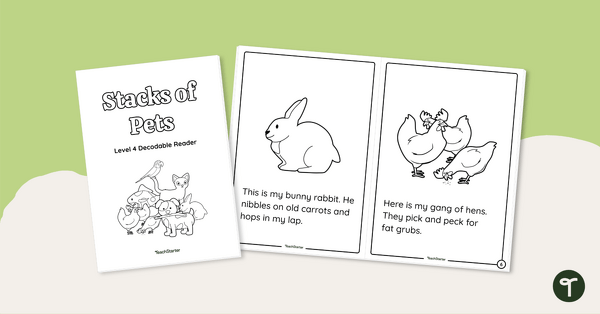
Stacks of Pets - Decodable Reader (Level 4)
Develop confident, successful readers with this phonics-based, printable decodable book.
- Plus Plan
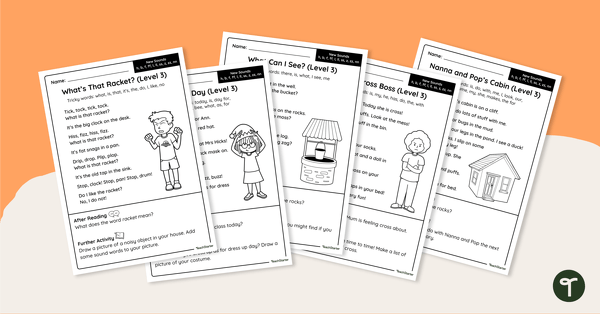
Level 3 Decodable Readers - Worksheet Pack
A set of one-pager worksheet versions of the texts from our Level 3 decodable readers
- Plus Plan
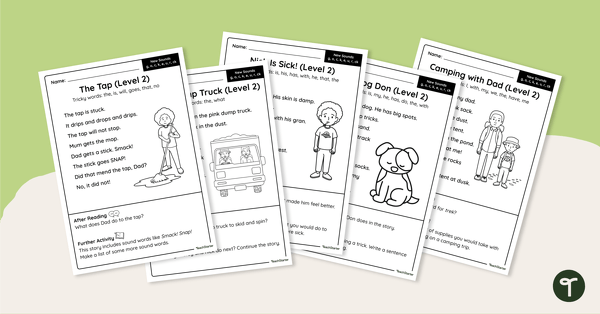
Level 2 Decodable Readers - Worksheet Pack
A set of one-pager worksheet versions of the texts from our Level 2 decodable readers.
- Plus Plan
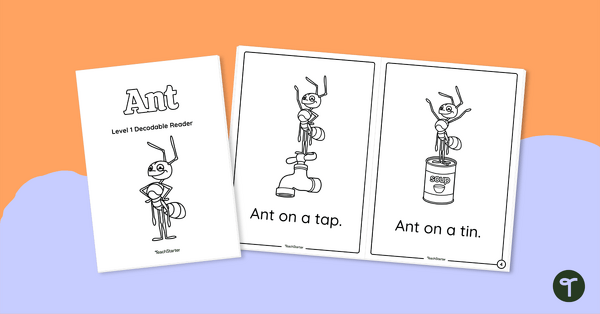
Ant - Decodable Reader (Level 1)
Develop confident, successful readers with this phonics-based, printable decodable book.
- Plus Plan
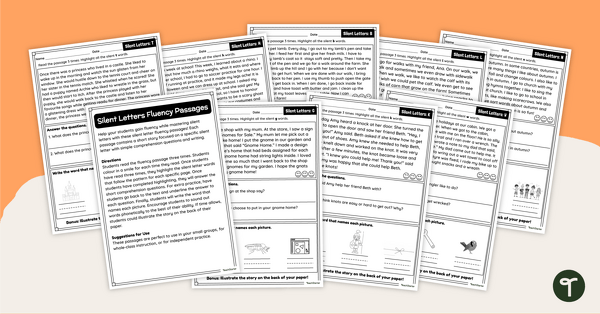
Silent Letters Fluency Passages - Worksheet Pack
Practise identifying the silent letters in words with this comprehensive collection of reading fluency passages.
- Plus Plan

R-Controlled Vowels Poster Pack
Supplement your phonics curriculum with an r-controlled vowel poster display.
- Plus Plan
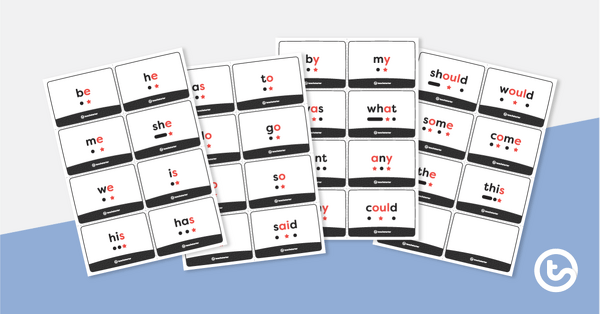
Tricky Word Decodable Sound Button Flashcards
A set of 30 tricky word sound button flashcards.
- Plus Plan
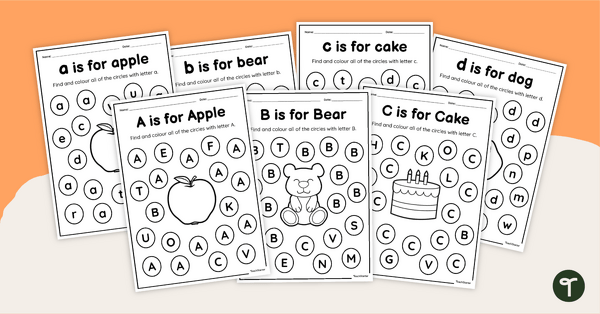
Letter Recognition Worksheet Pack
Use this set of Alphabet Letter Recognition Worksheets to help students recognise, name, and identify both uppercase and lowercase letters.
- Plus Plan
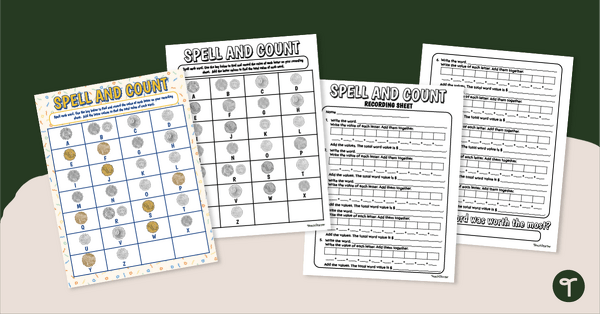
Spell and Count - Money Maths Activity
Develop spelling and money-counting skills simultaneously with a printable spelling and money maths centre activity.
- Plus Plan
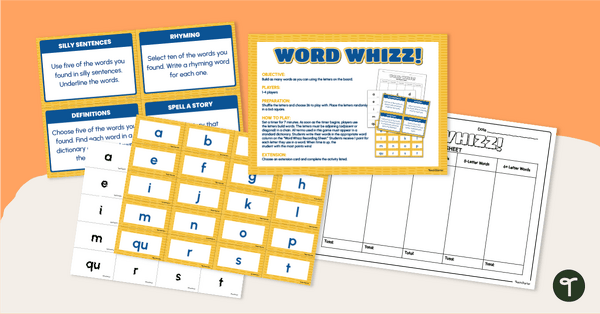
Word Whizz - Spelling Game for Kids
Play ‘Word Whizz’, a fast-paced spelling game for kids that encourages quick thinking and correct spelling.
- Plus Plan

Spelling Test Template Pack
Make those Friday spelling assessments easier with a pack of printable Spelling Test Templates!
- Plus Plan
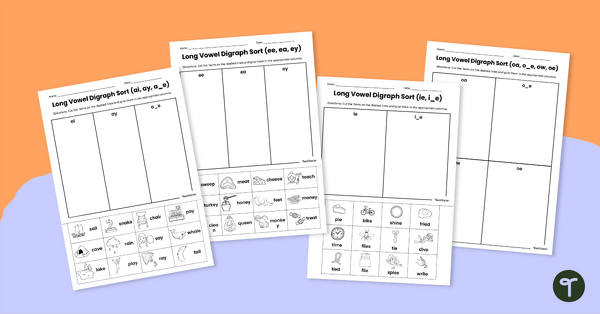
Long Vowel Digraph Sort Cut-and-Paste
Reinforce your students' knowledge of long vowel digraphs with this set of cut-and-paste worksheets.
- Plus Plan
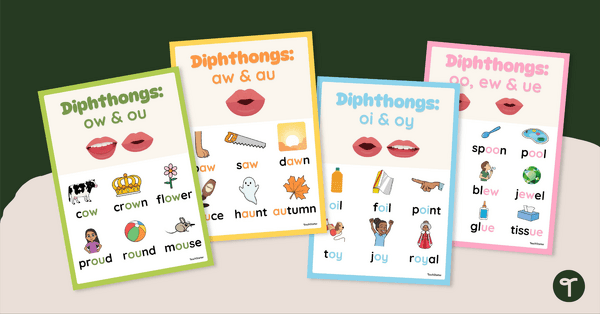
Diphthongs Classroom Posters
Display this set of posters highlighting the main diphthongs with word examples and mouth articulation images.
- Plus Plan

Inflectional Endings - Spelling with Suffixes Worksheets
Spell words with the inflectional endings -ed, -ing, -s, -es and -ies with a pack of printable practise worksheets covering inflected endings.
- Plus Plan
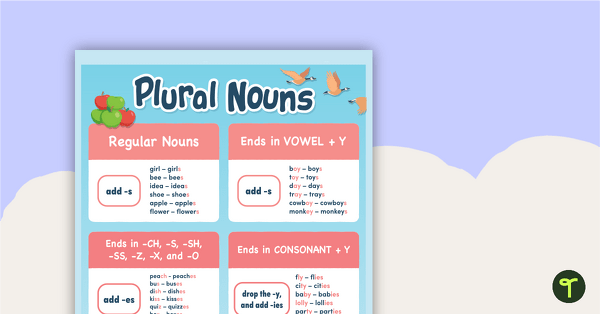
Rules for Plurals - s, es, ies, ves
Display the different rules for plurals with a printable plural noun anchor chart.
- Plus Plan
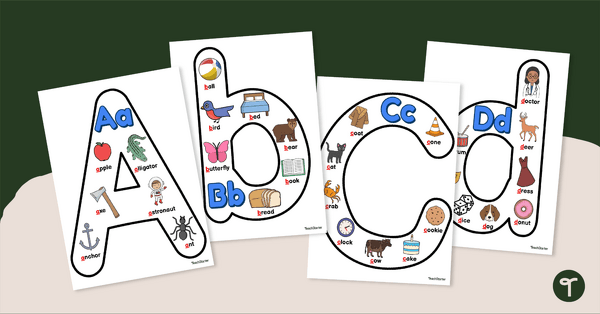
Alphabet Display (Letters and Images)
Display these lowercase and uppercase letter posters with images that begin with each letter.
- Plus Plan
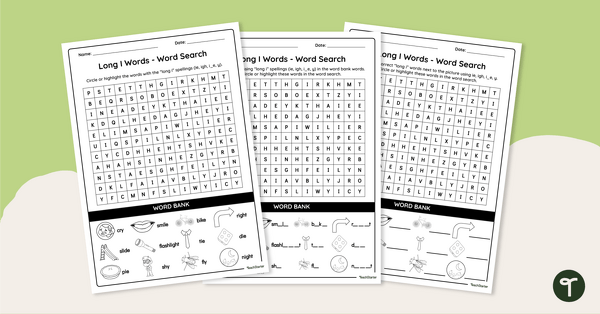
Long I Words - Word Search
Explore words containing some of the most common ‘long i’ graphemes with this set of differentiated word searches.
- Plus Plan
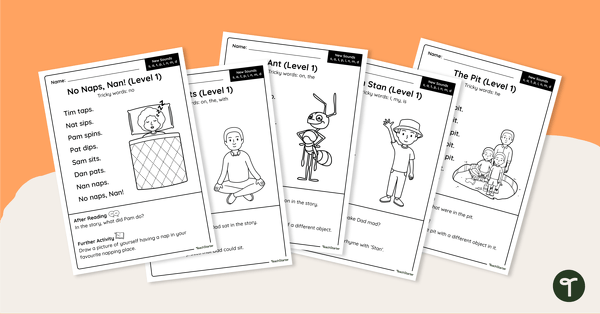
Level 1 Decodable Readers - Worksheet Pack
A set of one-pager worksheet versions of the texts from our Level 1 decodable readers.
- Plus Plan
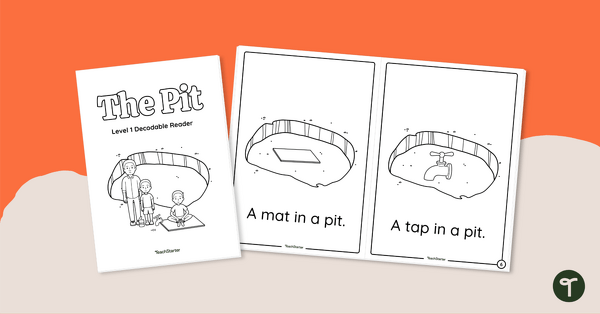
The Pit - Decodable Reader (Level 1)
Develop confident, successful readers with this phonics-based, printable decodable book.
- Plus Plan
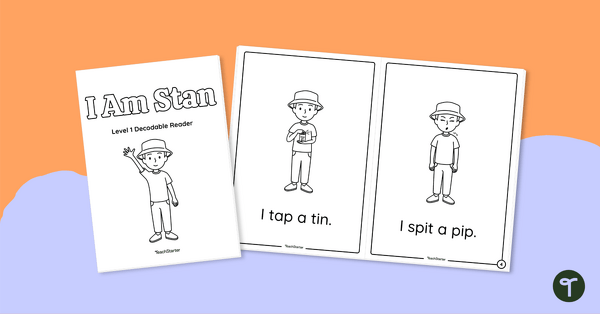
I Am Stan - Decodable Reader (Level 1)
Develop confident, successful readers with this phonics-based, printable decodable book.
- Free Plan

Initial Sound Peg Cards (Version 1)
An initial sound and fine motor activity for the early years classroom.
- Free Plan
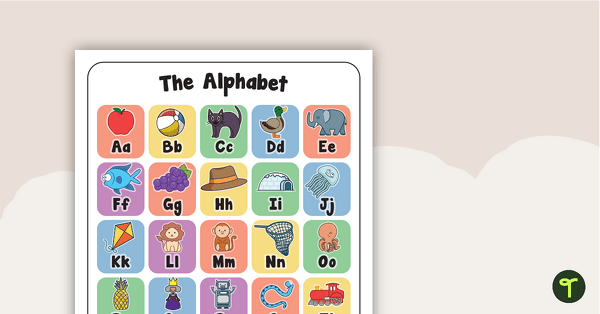
Alphabet Display Poster
A bright and colourful poster to display when introducing the letters of the alphabet.
- Free Plan
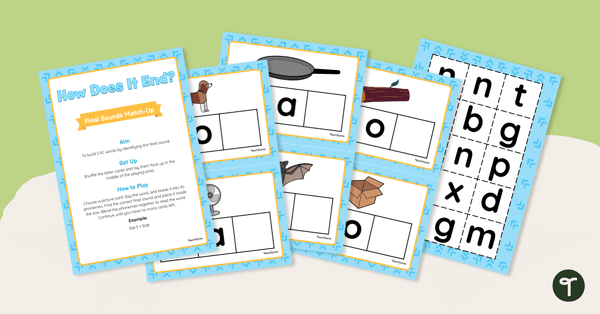
How Does It End? – Final Sounds Match-Up Activity
Consolidate your students' understanding of end sounds with this set of 15 task cards.
- Plus Plan
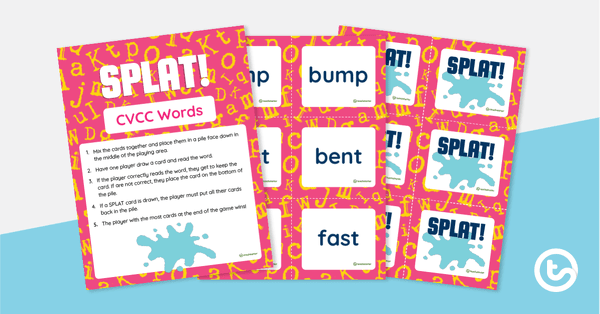
SPLAT! CVCC Word Game
A set of 36 task cards to practise decoding CVCC words.
- Free Plan
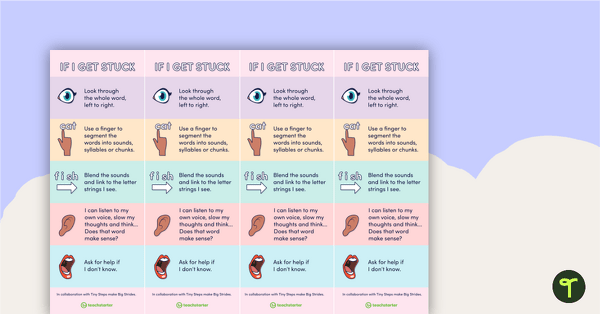
Science of Reading Decoding Strategy Bookmarks and Poster
A decoding strategy bookmark and poster set to help students during reading.
- Plus Plan
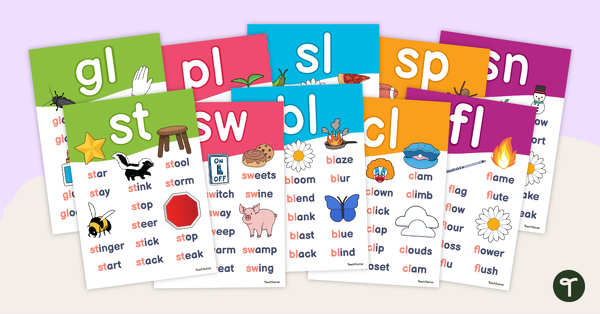
Ultimate Blends Poster Pack
Expose your students to a range of common consonant blends with this set of 20 posters.
- Plus Plan
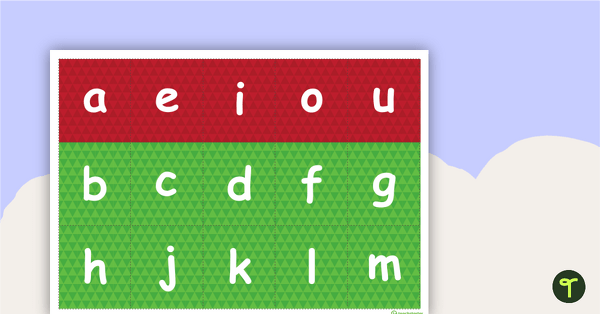
CVC Letters
A sheet of letters to use when making CVC words.
- Plus Plan
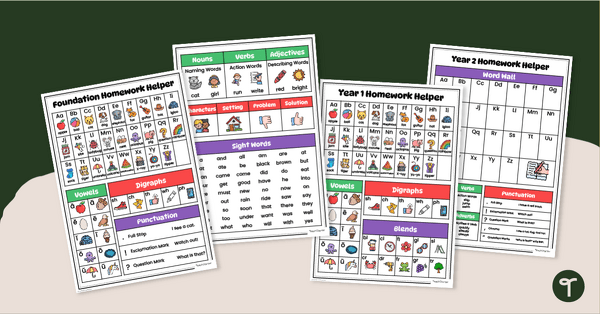
English Homework Helpers (F-2)
Give your students handy English Homework Helper printables to reference when working in class or at home.
- Plus Plan
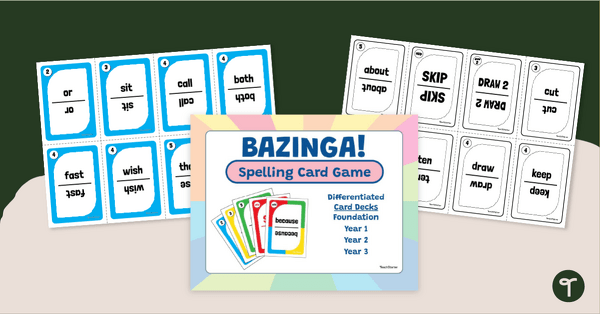
Bazinga! Sight Word Spelling Card Game
Play BAZINGA! a sight word spelling game that is sure to boost your students spelling skills.
- Plus Plan

Dolch Pre-Primer Sight Word Sheets - Spelling
Practice Pre-Primer Dolch Sight words with six weeks of daily sight word sheets for Foundation Year students.
- Plus Plan
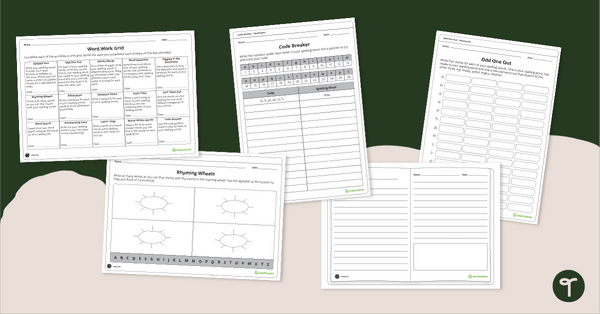
Word Work Grid and Worksheets – Version 1
A grid with spelling activities and corresponding worksheets.